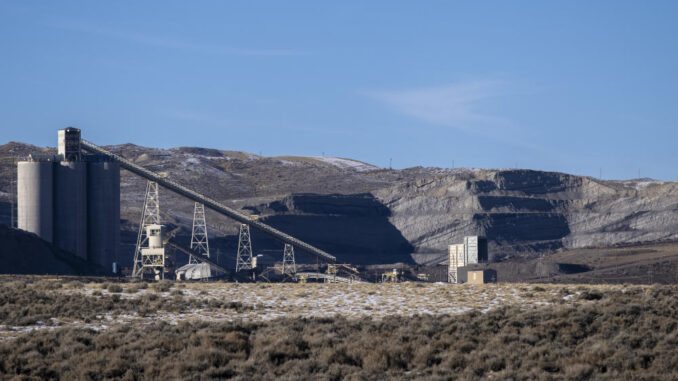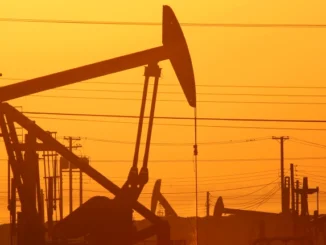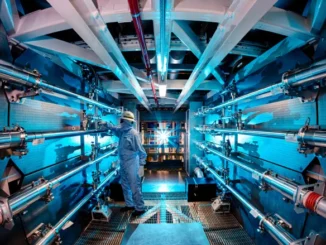
Climate change is a real and urgent problem. More than a century of carbon emissions is warming the planet and causing floods, droughts, fires and other cataclysmic events that are killing people, threatening livelihoods and upending economies.
But the war on fossil fuels that are the source of those carbon emissions is causing its own forms of chaos.
Oil, natural gas and other types of carbon-based fuel will be essential for decades, yet the pace of investment in future capacity is declining in the United States and other western nations, and chronic shortages are becoming likely. There’s plenty of carbon in the ground, but energy firms no longer want to risk the long-term investments required to get it out.
“The world is experiencing the worst energy crisis since World War II,” Brenda Shaffer, a professor at the Naval Postgraduate School, said at a recent conference sponsored by the Dallas Federal Reserve Bank. “The factors contributing to this are long-term underinvestment in oil and gas, public finance denial of investment in fossil fuels, market design and energy policies around the world.”
The transition to renewables and low carbon energy that U.S. and European policymakers are pushing is necessary. But the bridge from fossil fuels to renewables is missing a few spans, which could mean energy shortages and skyrocketing prices until green energy is widespread.
While many governments are creating strong incentives to adopt renewables, they’re not safeguarding supplies of the fossil fuels that meet 80% of the world’s energy needs today. And renewables aren’t coming online fast enough to offset the shortfall of oil and natural gas. That’s why energy markets were getting tight even before Russia’s Feb. 24 invasion of Ukraine sent prices spiking. Many analysts now think energy markets will remain tight — and prices high — for the next several years.
In advanced economies, costly energy will likely slow growth and perhaps contribute to recessions. In the developing world, energy shortages may worsen famines and trigger catastrophe.
The problem may not be obvious. Oil and gasoline prices have moderated recently, and new supplies from producers such as Venezuela could bring further relief. But this is a false sense of normalcy. Once China recovers from ongoing COVID shutdowns, demand for oil will strengthen and prices will go back up, maybe by a lot. The energy war between Russia and the west continues, as well, and a drop in Russian oil exports could also push prices up. American releases of oil from the US national reserve are due to end soon, further tightening supply. Self-imposed limits on western production will make the United States and Europe more dependent on other nations that prefer high prices over ample supplies.
The 2022 energy crisis persists in other parts of the energy sector. There’s a shortage of diesel, which is pushing the price of the fuel that powers long-haul trucks and farm machinery close to record highs. US natural gas prices this year have hit the highest levels since 2009, which was before the fracking boom that brought vast new supplies online. That means expensive heat and electricity this winter. In Europe, nations including the U.K., Italy, Spain, German and France are spending more money to mitigate the energy crisis and subsidize consumer energy bills than they devote to their military budgets, according to research firm Tellurian.
Here are some of other unwanted and unforeseen consequences of the premature retirement of fossil fuels:
The resurgence of coal. A shortfall of natural gas for electricity generation in the United States, Europe and other parts of the world is forcing utilities to burn more coal—the dirtiest of all fossil fuels—and to a lesser extent, oil. Natural gas is the cleanest-burning fossil fuel, with fewer emissions than coal or oil. But the blockage of new pipelines and drilling in some areas is keeping supplies tight, pushing prices up and forcing utilities to find cheaper alternatives.
“During the past decade, the anti-natural-gas campaigns have put gas into the basket with oil and coal,” Shaffer said at the Dallas conference. “Extreme policy against natural gas doesn’t lead to more consumption of renewables, but to higher consumption of oil and coal.” She points out that many existing utilities can easily switch their feedstocks from gas to coal or oil without any public notice, especially in Europe.
[Follow Rick Newman on Twitter, sign up for his newsletter or sound off.]
The International Energy Agency (IEA) expects the global demand for coal to reach an all-time high in 2022, largely because of the rising cost and scarcity of natural gas. Coal prices have doubled from pre-COVID levels, reviving an industry many thought was headed for extinction. “We’re seeing coal come back on the market,” Paul Dabbar of Columbia University said at an October energy conference sponsored by the university. “The odds are emissions are probably going to head in the wrong direction this year as a result of energy security going backwards.”
Natural gas production in the United States—now the world’s largest provider—has also flatlined since 2019, following a decade-long production surge triggered by new fracking technology. The Appalachian Basin stretching from New York to Alabama is one of the largest natural gas reservoirs in the world, but at least five pipelines that could transport that gas to American consumers and to U.S. export terminals have been blocked.
Nobody protests the building of a natural gas pipeline because they want utilities to burn more coal, yet that’s what is happening.
An American energy shortage. The United States is the world’s largest oil and natural gas producer, yet some parts of the country are likely to endure soaring prices and even rationing of the energy required to stay warm this winter. Residents of the Northeast are most vulnerable, because there aren’t enough pipelines bringing gas there from other parts of the country. The Northeast can import gas by ship, but seaborne gas prices have soared as Russia shut off gas pipelines to Europe and those nations looked for new sources. The ancient 102-year-ld Jones Act essentially prevents cheaper seaborne shipments of American gas from Gulf Coast ports. Some Northeast consumers use heating oil as an alternative to gas, but those prices have skyrocketed because heating oil is similar to diesel, which is scarce because of tight refining capacity, a ban on Russian diesel imports, and a variety of other factors.
Some Americans enjoy abundant energy and cheap prices, but Northeasterners may as well live in a different country.
The growing leverage of autocratic energy producers. It’s in Europe’s and America’s interest to become less dependent on oil and gas from undemocratic suppliers such as Saudi Arabia and Russia. Yet government and market pressure to curtail drilling in democratic nations gives autocratic fossil-fuel providers more leverage, not less. Unlike the Biden administration, Saudi Arabia and other Persian Gulf petro-states control domestic energy production and can direct investments required to secure future output. In the United States, by contrast, drillers are reluctant to produce more because they fear a future profitability crunch once renewables take over. The president can ask them to drill more, but he doesn’t control the private sector the way OPEC autocrats rule their nationalized oil industries.
“Who’s going to be the last man standing in terms of who invests in fossil fuels?” Helima Croft of RBC Capital Markets said at the Columbia energy conference. “It’s going to be a small number of Gulf producers. We are still going to have to make asks of these countries when we need more oil.”
An energy advantage for China. American and European consumers pay the global price for oil. China pays less. That’s because China doesn’t participate in sanctions against Russia and Iran, and is therefore able to buy their energy products at a discount to global prices. “China has access to cheaper oil than any competing economy,” Shaffer said at the Dallas Fed conference. If that persists, it will give China—America’s top economic rival—an important cost advantage in key global industries just as the Biden administration is ratcheting up guardrails against China’s future domination. China could also become an oil and gas refining powerhouse if western economies continue to discourage oil and gas investment.
What’s Next?
President Biden and other green-energy advocates argue that the widespread adoption of renewable energy will solve these sorts of problems. Sun and wind captured on US territory will reduce the need for foreign energy. The plunging cost of renewable technology can make some forms of green energy cheaper than fossil fuels. Cornering the market for the next generation of energy technology will boost the US economy for decades.
That’s may all be true—in the future.
But the energy economy is massive, involving trillions of dollars of infrastructure devoted to the carbon fuel over the last hundred years. It can’t change nearly as fast green-energy advocates would like. There will be permitting and logistical problems building green-energy transmission and storage infrastructure, just as there are barriers to building oil or gas pipelines today. Some green-energy technologies won’t pan out. And some of the minerals needed, such as lithium, nickel and cobalt, come from China, Russia or other nations unfriendly toward the United States and the west, raising the same problem as relying on Saudi Arabia or Russia for oil.
Even with aggressive adoption of renewables, carbon fuel will remain dominant for decades. Research firm Energy Intelligence estimates that global demand for oil will grow, not shrink, until about 2030. Then demand will plateau for awhile, only beginning to decline by the late 2030s. Larry Fink, CEO of investing giant BlackRock, said recently that “we’re going to need hydrocarbons for 70 years.”
“We’ve underinvested,” Abhi Rajendran, director of oil markets research for Energy Intelligence, said at the Dallas Fed conference. “We’re underwater on the supply side. It’s a recipe for higher prices. It’s going to be a bumpy couple of years. We’ve been talking about consigning coal to the dustbin of history, but coal continues to boom, and oil’s going to be no different.”
Climate activists are pressuring banks and investing firms to blacklist oil and gas firms, prompting investing titans such as Steve Schwarzman of Blackstone (BX) and Larry Fink of BlackRock (BLK) to warn that the pullback is happening too soon and too fast. At the same time, American drillers are changing their business models after years of poor financial performance. For a decade leading up to 2020, the U.S. fracking boom brought vast new supplies onto the market, which kept oil and gas prices low. But low prices and too much supply hammered oil and gas profitability, culminating in massive losses when the 2020 COVID downturn struck.
There were more than 600 oil and gas bankruptcies between 2016 and 2021, with busted firms defaulting on more than $321 billion in debt. Exxon Mobil (XOM) alone lost $22 billion in 2020. Investors and shareholders who bore those losses now want a much faster return on investment, especially given efforts to shut the whole industry down. “The investor demands that we prioritize returning capital to our investors who gave us that capital in the first place,” Hellen Currie, chief economist for ConocoPhillips, said at the Dallas Fed conference. “This capital discipline mindset is now entrenched, and it’s why we don’t see more rigs or frack crews going to work.”
None of this is an argument to give up on combating global warming or transitioning to renewables. If anything, there’s a case for a faster and more aggressive transition. The IEA estimates it will take $2 trillion of global investment in green energy every year to limit global warming to the standing goal of a 1.5-degree Celsius increase by 2050. Actual investment only totals around $750 billion per year, which is why that goal is probably unrealistic. (“1.5 is dead,” the Economist declared recently.)
The Inflation Reduction Act that Biden signed in August includes about $400 billion in green-energy investments, including incentives that could generate far more in private investment. But one measure that fell out of that bill was a permitting-reform measure backed by Democratic Sen. Joe Manchin of West Virginia, which would speed federal approval for both carbon and green-energy projects. Industry officials say faster approvals are desperately needed, given that the time it takes to get a permit for a typical energy project now exceeds the time it takes to build it, according to Tellurian. State and local permitting requirements sometimes derail projects, too, which is why the Manchin bill would put new limits on the legal challenges local communities can bring.
Biden, meanwhile, has threatened punitive action against U.S. oil and gas firms if they don’t increase production, such as banning exports or asking Congress to impose a windfall profits tax. Biden is probably bluffing, since doing either of those things could have the unintended effect of reducing production and pushing prices higher, not lower. But the threat itself, no matter how hollow, may be counterproductive, since it adds to Wall Street’s concerns about government hostility toward the industry, and squeezes the availability of financing even more.
‘All of the above’
In 2014, President Barack Obama unveiled an “all of the above” energy strategy that promoted “environmentally responsible” oil and natural gas production along with renewables, nuclear power and other emerging technologies. “The simplest solution was Obama when he said ‘all of the above,’ Sarah Emerson, managing principal at ESAI Energy, tells Yahoo Finance. “We’re going to need it all, because the energy sector is so much bigger than anybody realizes.”
The basic principle for assuring a smooth transition from fossil fuels to renewables is to make sure there are ample supplies of all types of energy for as long as they’re needed.
Some climate activists favor policies that make fossil fuels more expensive, reasoning that costlier oil and gas makes renewables cheaper by comparison. One flaw in that logic is that fossil fuels and renewables are nowhere near interchangeable. Consumers in Massachusetts can’t import solar power from Arizona if heating oil gets too expensive. They just have to pay more and endure the consequences. The real-world substitution of coal for natural gas also highlights the classic risk of well-meaning policies that produce unintended consequences.
“What we’ve lost over the course of the last decade has been balance,” former Energy Secretary Dan Brouillette said at the Columbia energy conference. “Agreements tend to start with a climate focus, but we can’t focus on that exclusively. It has to be balanced with the needs of the consumer and the prices we’re seeing in the marketplace. It’s important that we think about increasing the supply of all forms of energy.”
Natural gas, more than oil, could be the most potent stabilizing force during the transition to renewables.
At the Dallas Fed energy conference, Toby Rice, CEO of energy firm EQT, which operates in the Appalachian Basin, said the United States could more than double natural-gas production if pipelines and other infrastructure were in place to get gas to end users. Natural gas is the leading source of fuel for electricity production in the United States, and more gas would mean cheaper power for millions of households. It would also provide further relief for European nations trying to live without Russian supplies. Gas is “the biggest energy security blanket for Americans,” Rice said. “Get some pipelines built and U.S. oil and gas operators will step up.”
Gas is also part of the green-energy transition itself. Since wind and solar power aren’t always available, expanding their use on the grid requires a reliable “base load” that’s there if the sun isn’t shining or the wind isn’t blowing, and natural gas is the most appropriate fuel for that. “There’s this idea that if you use more renewables you use less natural gas,” Brenda Shaffer of the Naval Postgraduate School said in Dallas. “But it’s exactly the opposite. If you don’t commission enough natural gas, you can’t use enough renewables.”
Sarah Emerson of ESAI highlights hybrid automobiles as an example of how the transition to renewables has veered off-course. Hybrids, which have both a gas engine and an electric motor, grew popular from 2000 to 2015 as they offered the best fuel economy on the road with the reliability of a gas-powered engine. But most automakers have now dropped hybrids in favor of fully electric cars, even though EVs are expensive, the charging network is underdeveloped and most automakers don’t even turn a profit on EVs yet.
“Tell me why we abandoned hybrids,” Emerson says. “The original policy was let’s get to 45 miles per gallon, but hybrids got shunted aside because we got obsessed with EVs. People said, ‘We can’t have hybrids because we want to get rid of gasoline.’ But it might have been better to have another 10 years of hybrids and maybe then 10 years of EVs.”
Biden has tacitly acknowledged the need to secure more fossil-fuel supply. In October, the Energy Dept. said it plans to replace roughly 200 million barrels of oil released from the national reserve this year when the market price hits $70 per barrel or so. The government will also sign long-term contracts guaranteeing that price, which is unusual. The government normally refills the reserve at the spot price, with no advance notice of its purchase plans. Guaranteeing a price is meant to signal to producers that they can increase supply, knowing there will be at least one major purchaser buying at a price that lets them turn a profit.
But subtle signals may not be nearly enough to convince investors to finance big new fossil-fuel projects or producers to launch new battles with permitting authorities. And there are no signs of a truce in the war on fossil fuels. “There is not really a whole lot being done to fix the fact that we have underinvested, and plan for the fact that demand is going to go up,” Abhi Rajendran of Energy Intelligence said at the Dallas conference.
“I don’t,” he added, “expect a whole lot to change.”
Consumers will bear the collateral damage.



